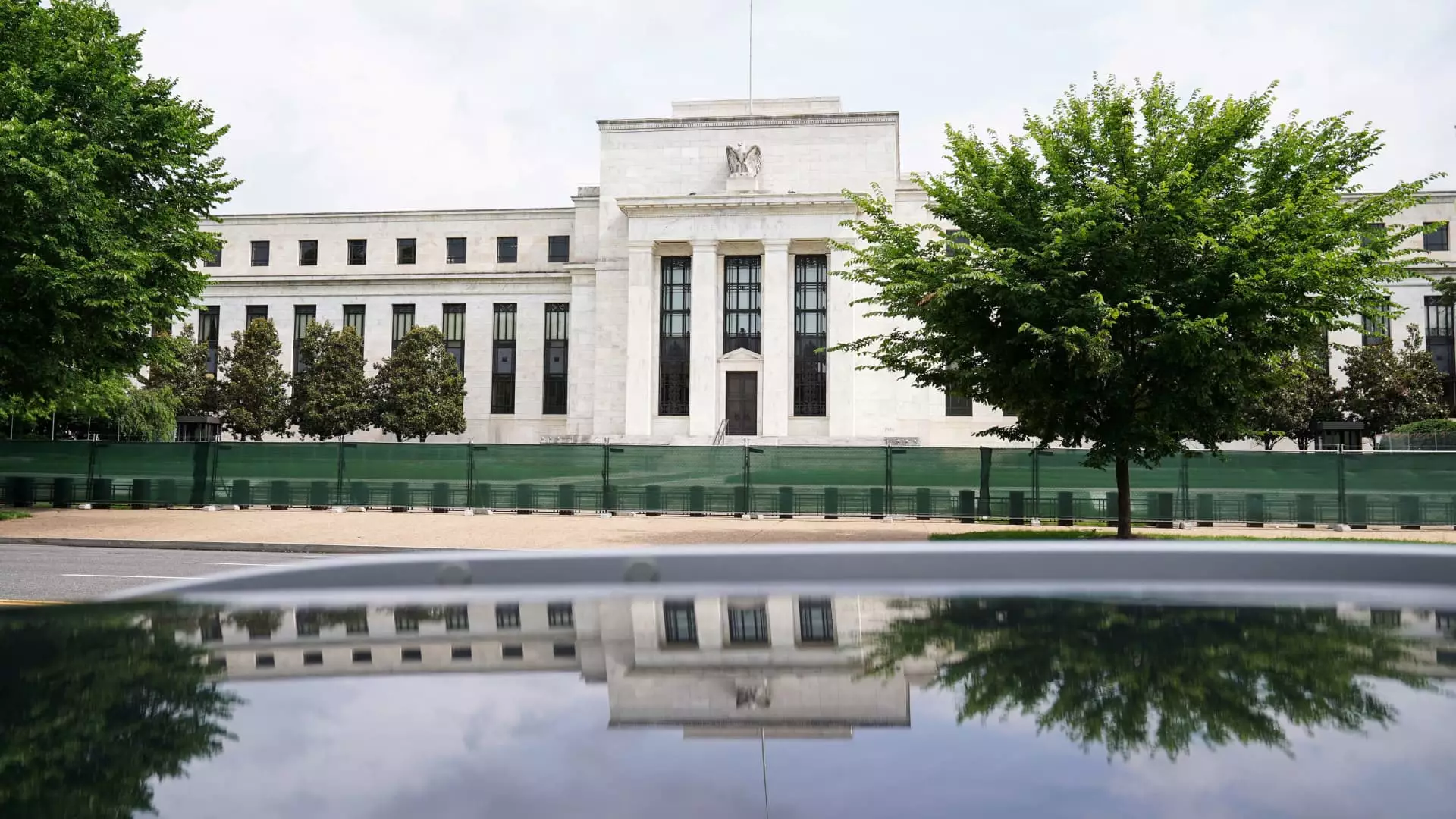Recent data has made it increasingly evident that inflation in the United States is finally showing signs of cooling off. This development has fueled speculation that the Federal Reserve may embark on a rate-cutting journey during its upcoming meeting. For many Americans, especially those grappling with the continuing strain of rising living costs and astronomical interest rates, even the hint of relief is encouraging. However, experts emphasize that while a potential interest rate reduction may garner optimism, it is unlikely to provide immediate or substantial relief to those already struggling.
The inflation crisis that peaked post-Covid-19 pandemic has altered the economic landscape drastically. In response to the surging costs of goods and services—which hit the highest rates seen in over four decades—the Federal Reserve undertook a stringent policy of raising interest rates. As a consequence, borrowing costs for consumers skyrocketed, placing immense financial pressure on many households across the country.
Economists have pointed out that the recent moderation in inflation—evidenced by a decrease in the Consumer Price Index (CPI) to 2.5% down from 9% at its peak—has given policymakers more leeway to consider rate cuts. Greg McBride, Chief Financial Analyst at Bankrate.com, notes that the Fed is expected to initiate this process with a modest quarter-point cut at their next meeting. However, he cautions that such a minor adjustment is merely a stepping stone and not a comprehensive solution for consumers under financial stress.
Market analysts believe that there is a strong likelihood—nearly 100% according to the CME Group’s FedWatch measure—of this rate cut taking place. Predictions suggest that the Federal Funds Rate could lower to below 4% by the end of 2025, a significant change from the current range of 5.25% to 5.50%. This adjustment will not only influence how financial institutions interact with one another but also reshape the borrowing landscape for everyday consumers.
Consumer borrowing encompasses various forms, including credit cards, mortgages, and auto loans. Each of these financial products is poised for change with the Federal Reserve’s potential rate adjustments. For instance, many credit cards adopt variable interest rates that directly correlate with the Fed’s decisions. Following a prolonged sequence of rate hikes, average credit card interest rates have surged from 16.34% to over 20%, marking a pronounced increase. Unfortunately, even if the Fed commences rate cuts, experts assert that it might take significant cuts just to see rates return to previously established levels.
For those burdened by credit card debt, switching to a 0% balance transfer credit card coupled with aggressive repayment strategies is a recommended approach, rather than relying solely on rate cuts for relief. As Brett House, an economics professor, highlights, while lower rates may be beneficial in the long run, immediate assistance is unlikely.
While the adjustments in interest rates are also expected to impact mortgage rates, the interplay between these rates and housing prices poses another layer of complexity. Currently, the average rate for a 30-year fixed mortgage stands at approximately 6.3%, having decreased from a peak earlier this year. Yet, despite this minor respite, home prices remain robust, constraining affordability for prospective buyers.
Jacob Channel, a senior economist, aptly notes that the distributed effects of rate cuts will not necessarily translate into more accessible home buying. Existing economic hurdles, including persistent high home prices, remain significant barriers for many individuals trying to achieve homeownership.
Moreover, the auto loan market stands to experience similar fluctuations, although the immediate effects of a rate cut may not be prominently felt. The average cost of a new car loan currently hovers around 7.7%, and while a downward trend is anticipated, experts warn consumers that minor cuts will likely not enable them to purchase significantly more expensive vehicles.
In terms of education financing, federal student loans—typically fixed—will generally remain unaffected in the near term by any Federal Reserve rate cuts. However, those with private loans may experience changes depending on their interest structure. Mark Kantrowitz, a higher education expert, indicates that borrowers could consider refinancing variable-rate loans for potential savings down the line, though such moves must be measured against the loss of federal protections.
Despite the focused discussions on interest rate cuts, consumers need to recognize the broader context of these changes. As the Federal Reserve tinkers with rates, it’s imperative to keep an eye not only on borrowing costs but also on the intertwined factors of inflation. While modest improvements may be on the horizon, the path to economic relief for average Americans remains fraught with complexities that demand careful consideration and proactive financial strategies.


Leave a Reply